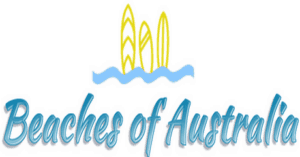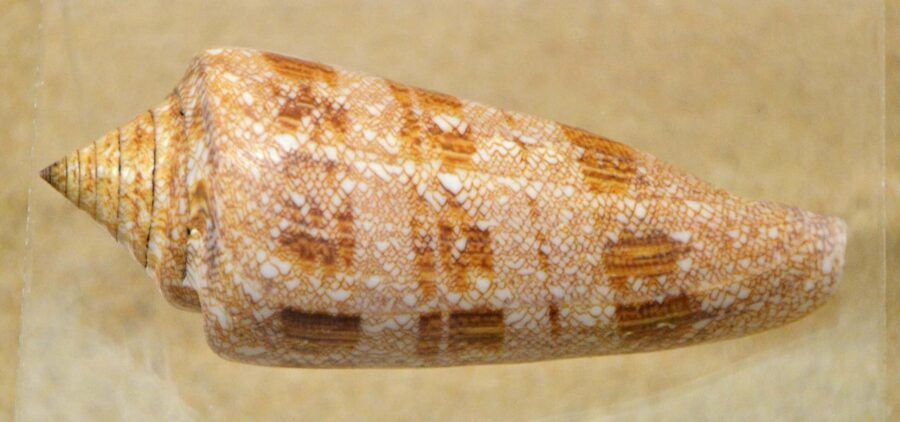Any trip to the beach is usually much more than just a day in the sun. There are water sports, swimming, tanning, the list could go on forever.
While all of those are incredibly fun, perhaps the most is exploring the beach area itself. Beaches often have so much along their shoreline and sanded dunes for visitors to take a peek at.
This includes interesting driftwoods, seaweed, sand dollars, but most importantly….expensive seashells! When visiting any beach, the scavenger hunt for seashells tucked under beautiful sand is an absolute joy!
Finding the most expensive seashell named Conus Gloriamaris, would be the ultimate find due to how expensive it is. This seashell could fetch as much as 30 million dollars! Finding this seashell is a dream for most shell people.
With over 10,000 beach areas along its coastlines and island areas around it, there are many chances to spot some stunning shells. While searching for seashells is a grand activity, what are they exactly and is it okay to collect them in Australia?
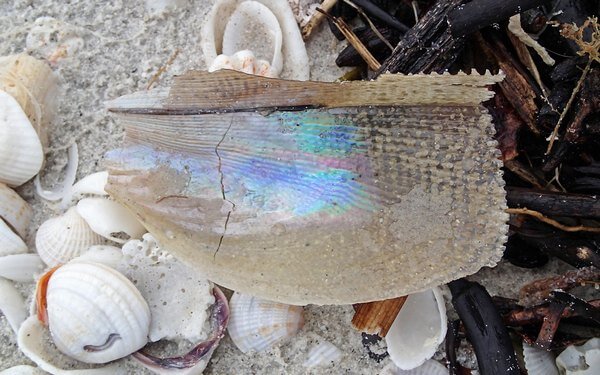
What Are Seashells?
The ocean has quite a lot of marine life in it and this includes things large and small. Simply put, seashells were once the protective armour of a small creature that has either died or been eaten by other marine life.
While this seems a bit morbid to think about, these beautiful shells travel far lengths and wash up on shores all over the world, giving them new life.
The new life these seashells take on is those who happen to find them. People find seashells everywhere and collectors (and even just people who enjoy their beauty) love scooping them up to put on display.
Seashells can also be from marine life (most commonly mollusks) that have outgrown their shells.
Considering that seashells come in all sorts of shapes, sizes, textures, and colours, they truly are characteristic and can stand out on their own.
They come from various species and have been a large part of history throughout the years both for collectors and for practical uses by ancient civilisations.
With such variety to these magnificent shells, they can be worth some value depending on their specific characteristics. Australia is known for having some of these shells wash up on its shores.
But this once again brings up the question of is it okay to collect them and are they really worth anything?
Can You Collect Shells In Australia?
The short answer is yes! However, due to the naturalistic aspects of this gorgeous country, Australia does have some regulations regarding how they can be collected. This is similar to the regulations for fishing and how in some areas, fishing is restricted.
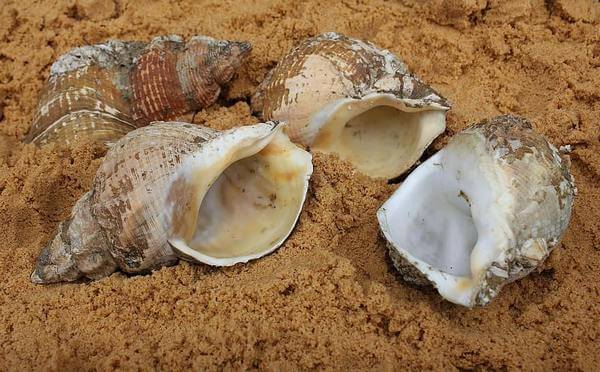
These efforts are to help preserve and protect the vast and sometimes rare wildlife that occupies Australia. However, visitors shouldn’t let this deter them from heading out to the beach for a day of scavenger hunting for shells.
Alternately, it should serve as a means of being aware of the rules to help in the efforts of keeping Australia’s wildlife safe and gorgeous.
The following restrictions/rules should be kept in mind when searching for these gems:
ALWAYS Check The Shells Are ACTUALLY Empty!
This is probably the most important rule on the list. The ocean is a vast place and waves are always rolling on its surface. This means that even shells with little creatures still inside can wash up on the shore.
Guests should always check for signs of life by flipping the shell over and inspecting it. They can hide in deeper areas of the shell, so it is crucial to check for any grooves or holes in the shell as well.
If there is any sign of life, it must be placed back on the beach or in the water.
Shells Shouldn’t Be Collected Anywhere That Is Considered A National Park
Some of Australia’s coastal areas are considered national parks. These parks can include beaches or lakes that may have shell life in them.
This restriction is related to the first rule if there’s life within the shell, it should always be put back.
Guests can still look for shells in these areas, however, the collection of the shells is strictly enforced by inspector officers. It’s their duty to make sure the wildlife is protected.
If they are in fact empty, they may be collected, but it is better to ensure that the shells in the national parks are not taken. It might be a better idea to just admire them and allow them to continue being a part of the area.
It also should be noted that not all national parks operate exactly the same in Australia. Some will not allow the collection of any shells at all, specifically in places with special flora and fauna are located.
Others actually require a permit to collect shells.
In relation to the permit, the collection of shells is directly related to weight. If it’s more than 10kg of shells, the permit must be obtained.
Some national parks in Australia are known to actually have a limit on the number of shells that can be collected, with that number usually being no more than 50 shells in a day.
Once again, these limitations and restrictions are meant to protect certain species of marine life and should be respected and followed.
What Is The Most Expensive Australian Seashell?
When it comes to assessing a pricetag of a seashell, it is important to recognize how they’re formed. The reason that some seashells like the Conus Gloriamaris are considered to be worth big bucks is because of their shape and colouring.
However, the species of mollusks that once we’re inside of the shell are also important. Certain species will always have similar shapes to their shells but different colouring.
The shape of the shell is formed when the mollusks excrete calcium carbonate. This mineral mixes with other minerals in the ocean waters and hardens around the bodies of the mollusks.
The colouring is directly related to the mollusk’s waste and things in the ocean such as particles from the ocean floor, etc. This process is pretty much a blank canvas making every shell an artistic formation.
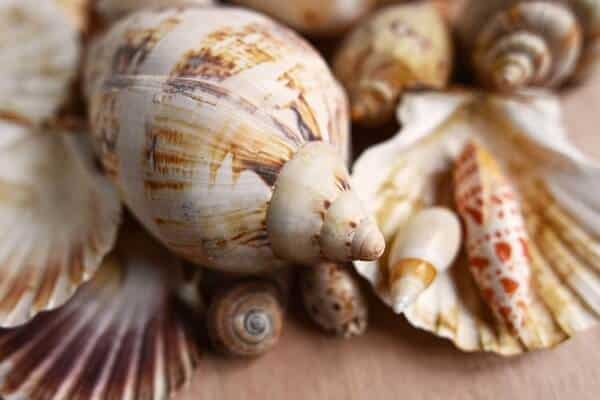
With this in mind, what types of shells in Australia are considered to be the most expensive? Well, seashells are sold by various people on various outlets such as eBay, personal websites, trader exchanges, etc.
The prices that are set for these sites are based on the person’s perception of the shell. There are many different shells that can be found on the shores of Australia. Some of these include the following:
- Scalloped Shaped (or fan-shaped, generally from the species Veneridae)
- Conch shaped (spiral looking with points along the spiral, generally from the species Buccinidae, Nassariidae or even Ranella)
- Alabaster Murex shaped (wide curled shells with many spikes along the surface, in all directions, generally from the species)
- Cone-shaped (funnel looking by being wider at the top and more narrow towards the bottom, different variations of this exist, but they are from the cone snail species which are considered very dangerous and should not be picked up)
- Oval-shaped (elongated shell, where the bottom has an opening along the whole length of the shell, from the gastropod species of mollusks, one of the largest species in the world)
These are just the most common shapes found in Australia. There are more, but once again, extreme care to be taken to inspect any shell that is found. Except for the cone-shaped, those should be left alone! However, some people dare to pick these up.
They are often considered some of the most colourful shells out there. Anyone touching them should take extreme caution as they can be deadly.
So when it comes to the most expensive shell, variations of the conch shell tend to go for the most money. Overall, shells are priced based on their size, but can also be priced on their colours or textures and sellers can really gauge the price to what they want to list it for.
However, conch variations seem to be the most pricey. Some sellers list Australian shells anywhere from as little as $4 to over $500! (AU dollars). The higher-end seashells are anywhere from 45 to 88cm big, making them quite the gem of a find.
Can You Take Shells From The Beach In Australia?
Remember what was covered earlier, all restrictions for collecting shells should be taken into consideration. That includes ensuring there are no live creatures inside, sticking to weight or count limits, and not touching ones that are considered to be a part of national park areas.
If the shells are empty and it’s not within the confines of some of the national parks, they can be taken from the beaches. These are the ones that are seen for sale and are usually considered to be legal.
In terms of taking shells from the beach in Australia, if the person is a resident, this is not a problem (provided all the rules are being followed above).
When thinking about taking shells from the beach in Australia out of the country, the restrictions will depend on the country that the tourist is travelling to.
However, the general rule of thumb for most of these countries is that the shell does not pose any threat to the environment in which they are entering.
For example, absolutely clean shells with no insects, etc, in them are acceptable. This is an easy rule to follow if travelling outside Australia since they require all shells to be checked for life anyways.
This is an important rule to follow because the introduction of different species into other countries can really wreak havoc on their environments.
When visiting Australia’s many beaches, guests should feel excited to check out the various shells washed up onshore. That is one of the best things to do while walking along the beach.
Even with some rules and regulations, the fun in the search can ensue!
Fun Things You Can Do With Seashells At The Beach
Seashells are the hard protective layers of sea creatures. These shells are part of sea creatures since they come from their bodies. Their primary objective is to protect the sea animal from harm.
These seashells are typically found at the beach shore after being carried by water. There are seashells of different colours and sizes, and people love collecting them for various purposes.
Furthermore, there are many fun things you can do with seashells at the beach. Hence they are useful substances that make the beach experience memorable. And they are seashells. You will indeed have a pleasant stay at the beach while having fun.
If you can’t get to the local beach you can buy some online.
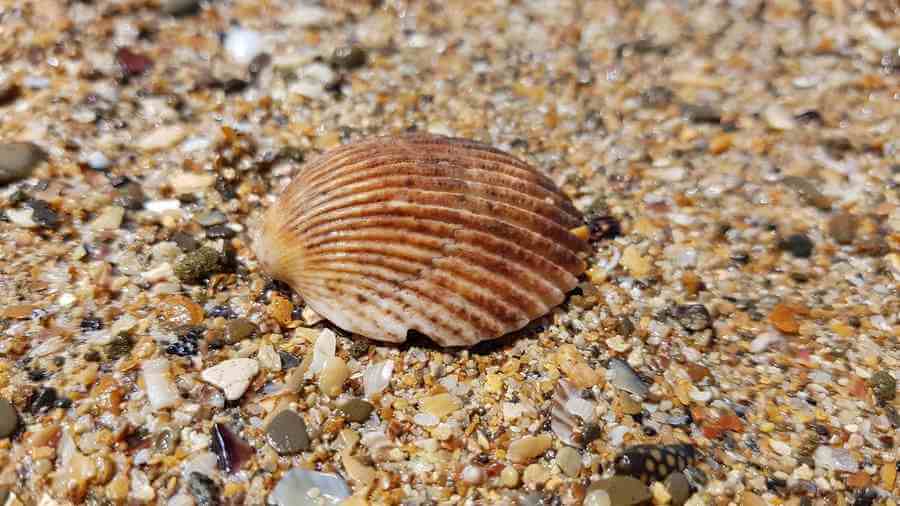
Making Seashell Hair Pins And Crafting Necklaces And Bracelets
Seashell hairpins are beautiful and unique crafts that you can easily make while at the beach. First, you look for good natural pins, for example, bobby pins.
Then collect unique seashells and glue them to the pins. The size and design of the hairpin are according to your preference.
Other than hairpins, you can make little hair clips for your children. These seashell hairpins and clips are good crafts that will bring a coastal groove to your hair.
When you visit the beach, you would like to carry back something memorable back home. Seashells are useful objects that can be used to make beautiful necklaces and bracelets.
You have to collect shells of the same size and different colours.
A good piece of thread, glue and some glitter are other materials that you might need. You will design a particular bracelet or necklace according to your preference.
These ornaments can be excellent gifts to friends and family. Young children will also cherish such unique ornaments.
Therefore, among many fun things you can do with seashells at the beach, crafting necklaces and bracelets is one wonderful thing to do.
Collecting Seashells As Musical Instruments
Particular types of seashells can be used to make musical instruments. While at the beach, it would be fun to collect these shells and create melodies from them.
For example, a conch or shell trumpet is a naturally occurring shell that is from particular kinds of snails.
Due to the conical bore and shape of a conch, it is a suitable shell to use as a trumpet. In most instances, the conch does not require any modification because it has a good shape that can be readily used to create musical tones.
The size and shape of a conch determine the musical tone produced. Therefore, collecting these seashell horns and making good melodies from them is a fun thing you can do with seashells at the beach.
Collecting Seashells As Souvenirs
Going to the beach is always a great experience that should be cherished. Since seashells are beautiful and unique, collecting them is a fun thing you can do at the beach.
Seashells also come in different shapes, colours, and sizes; thus, one can collect them according to his/her preferences.
Collecting seashells is fun because you get to learn and observe more aspects of sea life. One can also get to learn the different types of seashells and which sea animals inhabited them. Besides, you get to appreciate the wonders of creation.
This experience can be made more memorable by keeping the unique shells in a special souvenir jar. This jar can be marked with the location and time when the particular shells were collected.
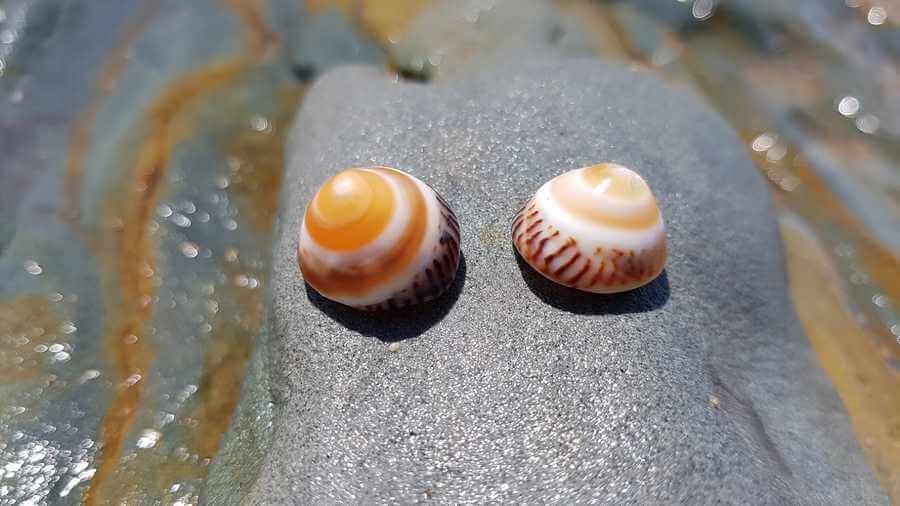
Making Bowls And Spoons And Other Tools
Seashells are suitable materials that can be used to make bowls and spoons. This is because they are hollow and can be useful to accommodate a solid substance.
Clams are the recommended type of shell to make bowls because they are large. You will have to collect seashells of particular sizes for bowls and spoons.
Then you clean the hollow part. You can also attach a wooden stick to the spoon for handling. While eating at the beach, you can use these simple and natural crafts.
These seashell bowls can be used for various purposes, for instance, eating, storing sugar and salt, and collecting herbs.
Other than bowls and spoons, seashells can be used to make other essential tools to use while at the beach, for example, clasps, scrapers, and blades. They can also function as good souvenirs for your family and friends back home.
Decorating Sand Crafts
While on a beach vacation with your family or friends, you might want to make sand crafts. For example, sandcastles, sand pictures, and words made of sand.
While creating these sand crafts, there are many fun things you can do with seashells too.
For example, seashells might be used to make the sand craft more unique, creative, and appealing. You can use colourful shells to write words on the sand, or as windows, doors, and gates on the sandcastles.
Hence, seashells are suitable materials to decorate sand crafts at the beach. These activities with sand and seashells will make the beach experience more fun and memorable.
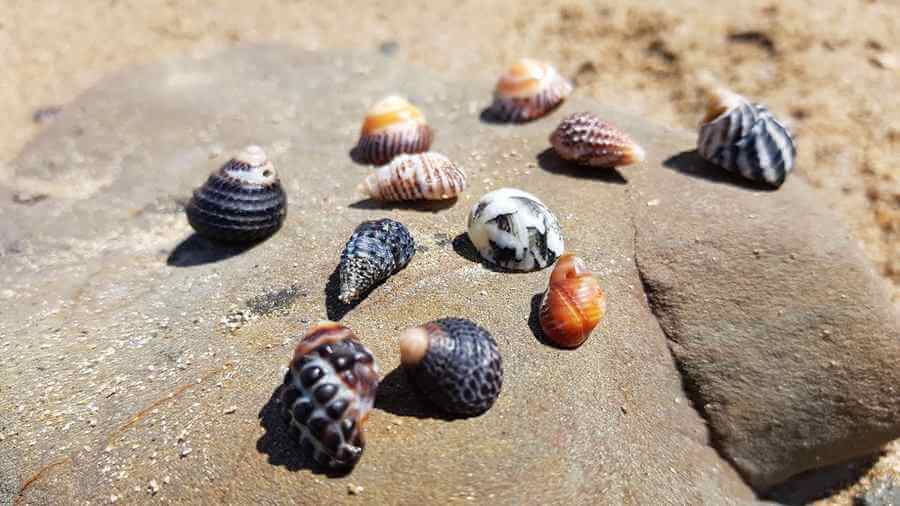
Seashells Found On Australian Beaches
There are various types of seashells found on different beaches in the world. Australia is an island that has many beaches. Therefore, there are many types of seashells found on the beaches there.
Australian beaches have various kinds of unique and beautiful seashells. For example;
• razor shells
• turban shells
• limpets
• whelks
• periwinkles
• all bones
Though there are many kinds of seashells, these are some of the common types found on beaches of Australia. They are all unique shells with different shapes and sizes. These particular shells are used for various purposes.
However, there are some types of shells that might be lethal to human beings. For example, cone shells or cone snails are quite toxic shells, and humans should avoid them.
Seashells are natural materials that connect us to nature. Furthermore, seashells were used by our ancestors for various religious, cultural, and aesthetic purposes. Some crafts and ornaments can be made using seashells.
These crafts are natural, and unique and portray beautiful expressions of the beauty of nature. Therefore, when you visit the beach, there are many fun things that you can do with the simple seashells available.
More Pages On Seashells
Sand dollars are a common beach item found in most parts of the world. Specifically, they are found in tropical areas of the world because of the warmer water. In some parts of the world, they...
Everyone around the world is familiar with what a seashell looks like. They are found along shorelines all over the world and come in a variety of sizes, colours, and shapes. However, how exactly...
